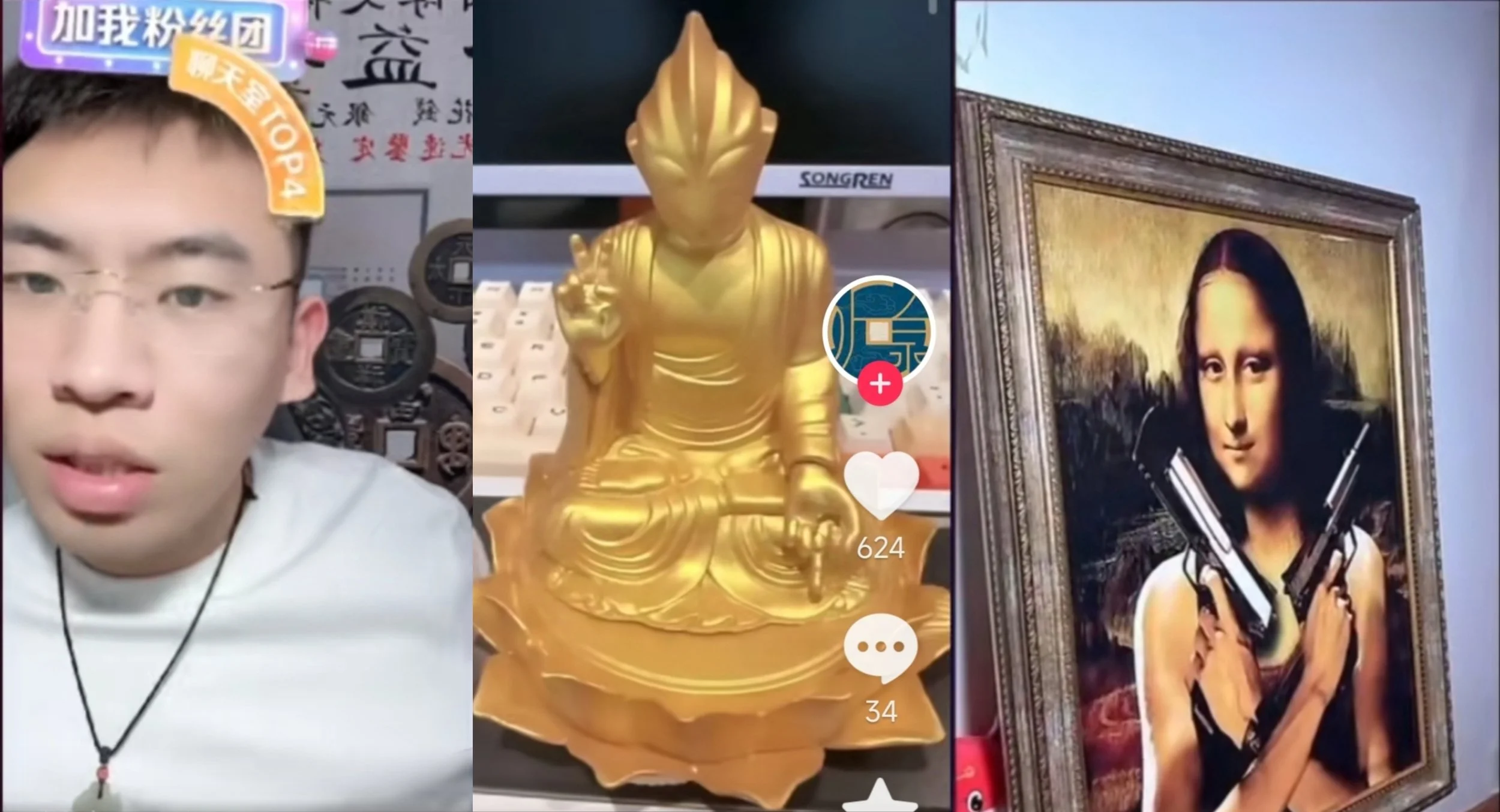6 themes from 618 that can apply year-round in China

Many China commentators look to the country’s big ecommerce festival results as a barometer for consumer sentiment. China’s second-largest festival, 618 is now in full swing, and showing some positive signals of Chinese consumers’ willingness to spend.
Alibaba and JD, who were suspiciously opaque about their 618 and Singles’ Day results last year, are singing from the roof tops about their 618 results this year.
37,000+ brands doubled sales on Alibaba platforms so far this 618, and 185 brands have achieved more than ¥100 million ($13.8m) in gross merchandise sales this year. Apple, after offering its biggest discounts yet, racked up over ¥1.5 billion ($200 million) in sales in its first hour of the festival. Similarly, JD has trumpeted the 10,000+ brands who saw transaction volume increase by over 500% in the first four hours on 2023.
In addition to being a bellwether for Chinese consumer spending, the big ecommerce festivals often provide themes which can help steer China marketing strategies for the rest of the year. Below are six themes that we’ve noted from this 618.
The first theme is the simplification of promotions. Recent shopping festivals have seen consumers put off by complicated offers and conditions. Both the platforms and vendors have taken notice this year, not offering their pre-sales period, rather just offering shorter, flash sales, like the festivals of old.
Many Chinese consumers are feeling a little stressed at the moment as we’ve noted here, here, here and many other places. Brands that offer transparent and simplified products and customer journeys are likely to connect with consumers seeking to simplify their lives.
Theme two is the continued growth and importance of livestreaming as a channel to sell your wares – particularly those which are brand-owned. Viewers for livestreaming on JD increased 460% from last year. Alibaba saw 38 of its livestreaming rooms turnover more than ¥100 million ($13.8m), over half of which were from livestreams owned by brands, not KOLs. RED/Xiaohongshu, who has been working hard to convert its traffic to more sales, saw the number of brand-operated livestreams grow 380% and GMV up 420% from last year.
The third theme is the increasing pulling power of lower tier cities on China’s retail spending, which is evident in this year’s 618. But the results also highlight their continued price sensitivity. JD’s super-cheap offer of ¥9.9 ($1.37) items with free shipping attracted over 100 times more shoppers than last year, with over three-quarters coming from third tier or lower cities.
The forth theme is increasing focus on building loyalty as the cost of acquisition continues to rise in China. Alibaba is case in point, doubling down on its 88VIP program, offering ¥10 billion ($1.38b) in coupons to members. Last quarter, Alibaba saw its 88VIP members increase in double-digits year-on-year to 35 million.
The fifth theme is Chinese platforms are using 618 to help their push into overseas markets. The rise of Temu and Shein overseas has seen Alibaba playing catch up. We saw this with the announcement of David Beckham as a global ambassador during the promotion, and the quirky multi-language 618 instructions.
The final theme is the attractiveness of deals to Chinese consumers, which come hand-in-hand with China’s ecommerce festivals. These need little explanation. Just so no one misses out, we’re following Apple’s lead by providing our broadest discounts yet. We’re offering 20% off all of our reports and valuable Tracker subscriptions (which will last 12-months). Just enter the code 618SKINNY. Valid until 20 June.
Jack Ma launched New Retail with a roar in 2016 starting a scramble for the New Retail crown on both sides of the Pacific. The buzzword has since fizzled out and Alibaba has divested in much of its bricks & mortar retail properties, but the need to rethink retail is more important than ever. Here's why...
Traditional collectibles have become a form of social currency among young people. From spiritual comfort to stylish accessories, livestreams and e-commerce have made these pieces more accessible. And people watch appraisal livestreams for whacky collectibles as an entertainment.
Douyin provides a platform for ordinary people to build small businesses. By creating unconventional and slightly whacky livestreams and videos, they've captivated young audiences and driven significant sales, despite their simple, rough-around-the-edges style.
Just like us, pets need to beat the heat during the sweltering summer months. From stylish cooling mats and pads, to ice collars and breezy apparel, a wave of functional and fashionable products has been heating up China's pet supplies market, creating promising seasonal opportunities.
This spring and summer, wearing bandana head scarves for outdoor trips has become popular, making them a must-have fashion item for 'dopamine girls.'
Chinese fresh food O2O platform Dingdong Maicai has become a cyber ‘flower, bird and fish market’ in addition to offering regular fresh food to expand business scope and attract young customers. You can find many ‘whacky‘ things there…
China big ecommerce festivals act as a barometer for consumer sentiment, but this year’s 618 also provides wider lessons into what is working with Chinese consumers right now
Alibaba has put together a fun and quirky guide to help foreigners, cats and martians understand 618 better, while also appealing to Chinese consumers
Douyin is moving from an embedded mall to a standalone app as it aims to break through existing limitations of its ‘interest-based e-commerce’ model
DAPHNE was a staple fashion item for Chinese ladies born in the 80s and 90s, but failed to adapt to changing market dynamics. A recent strategic shift and refresh has seen the brand rise from the dead
A myriad of resurrection services are coming online in China, ranging from tens of yuan to thousands
Incorporating AI into marketing is now so accessible in China, with plenty of examples of brands using it to engage more with customers and ultimately increase sales - some of the most successful approaches are surprising
Chinese consumers’ increasing need for emotional support is being reflected in what they’re spending online
It's clear that this year has been marked by a strategic emphasis on affordability, value, and shopping experiences. Various platforms, including Alibaba Group, prioritised offering "low prices" and “high value”, setting a distinctive tone for the "Double 11" shopping festival.
Livestreaming has been in the spotlight for this year’s Singles’ Day and continues to grow, but it is also evolving, with signs that further regulation could be on the cards
Elon Musk is looking to develop Twitter/X into a China-style superapp. Looking at the way China’s apps are evolving, he’s got plenty of examples to choose from, which should factor in China marketing strategies
Singles’ Day purchases highlighted provided some clear indications of shifts in consumer behaviour over the past 12-months
It wasn't long ago when every marketer in China was talking about ecommerce. Alibaba and JD battled it out for supremacy, and then another challenger, Pinduoduo, came from nowhere, and it became a three-horse race.Whilst the traditional ecommerce platforms still dominate online sales in China, the new world of livestreaming, KOLs and social commerce has dominated marketing forums over the past few years.
"If you protect yourself from the sun, you will be whiter than others. If not, you will be uglier," so said a sun hat advertisement last month on Douyin from the multi-billion dollar Chinese sun protection brand, Beneunder.
Last week saw millions of Chinese kids take the gruelling Gaokao. The average 31 hours a week spent doing homework and extracurricular classes from the age of three, have largely been to prepare for the notorious 9-hour exam which determines the university they get into. Many consider the Gaokao scores to shape the trajectory of their lives.
Can you name one event in your lifetime that has shaken the world more than Covid? The world has forever-changed since early-2020. Whereas many of Covid's consequences have been negative, there have been some silver linings which will hopefully stay with us long after the face masks and vaccine passes have gone.
Here is a tale of three brands, each who have seen quite different outcomes in China over the past-12 months. They provide valuable lessons in public relations (PR) in China's increasingly sensitive and less tolerant consumer market.
Last month, there were less than half as many celebrity marketing events in China as a year ago according to a report from Shiqu. The events were undoubtedly impacted by the extended tough lockdowns hitting Shanghai and other cities at present. Shanghai hosts a disproportionate number of celebrity events, and Shenzhen, which was locked down last month, is also a primary destination on the events map.
Visitors to a stunning old vineyard in China represent the increasing sophistication in tourism and general consumer purchases in the market
Chinese beauty brands are spending more than 2/3s of revenue on marketing, whereas foreign brands are under half that, and holding strong
Eileen Gu ticks so many boxes - both obvious and not so obvious - which enable her to resonate with Chinese consumers
By every measure, winter sports are booming in China leading into Beijing's Winter Games, presenting a multitude of opportunities for brands
U.S. studios' share of box office continues to shrink, which may contribute to nationalism in both China and the West
Recent security concerns with WeChat is likely to see B2B comms change to alternative channels in China





























Anyone who has spent time in China is likely to have noticed how elaborate the packaging can be relative to similar products in Western countries. Goods are wrapped up as if for high tea in the depths of a Heilongjiang winter - one may have to make their way through four or five layers of intricate wrapping before reaching a tasty morsel buried deep inside. The perceived status, discovery or safety from fanciful packaging trumps any environmental concerns for most consumers.